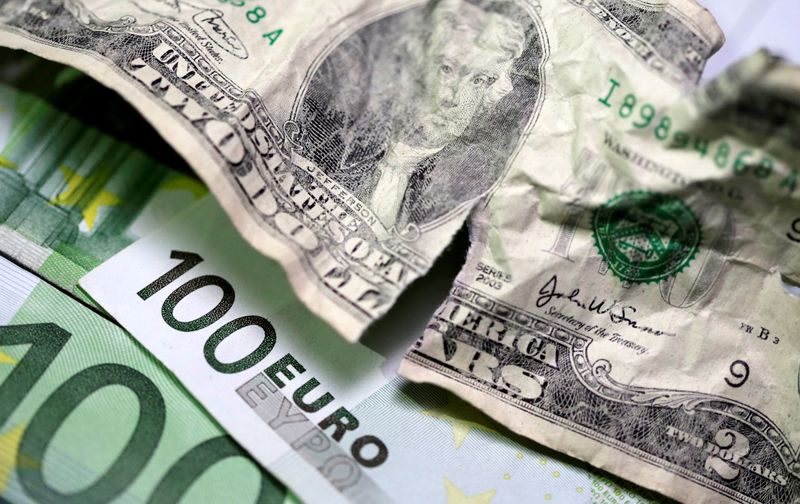 © Reuters. FILE PHOTO: U.S. dollar and euro banknotes are seen in this picture illustration taken May 3, 2018. REUTERS/Dado Ruvic/Illustration/File Photo
© Reuters. FILE PHOTO: U.S. dollar and euro banknotes are seen in this picture illustration taken May 3, 2018. REUTERS/Dado Ruvic/Illustration/File Photo
By Hari Kishan
BENGALURU (Reuters) - Unfazed by the dollar's recent strength, analysts polled by Reuters predict a weaker greenback in a year amid an improving global economy and expectations the U.S. Federal Reserve will stop hiking interest rates well ahead of the European Central Bank.
Bucking the latest downward trend, the dollar rose nearly 3% in February, its first monthly gain since September, surprising FX markets which were betting on the currency to remain on the back foot for the remainder of the year.
The dollar index is up over 1% for 2023 largely because of stronger-than-expected U.S. economic data and a corresponding change to expectations of interest rate hikes by the U.S. central bank.
"You've had this recent hawkish repricing of Fed rate hike expectations ... which obviously helped the dollar to rebound in February. So we can certainly see that being sustained in the very short term," said Lee Hardman, a currency economist at MUFG.
"Beyond that, though, we still are sticking to our view for further dollar weakness through the rest of this year."
The dollar was forecast to trade lower than current levels against all major currencies in the next 12 months, according to the Feb. 28-March 2 poll of 69 currency specialists.
While analysts have been predicting a weaker dollar 12 months out for over five years, their predictions only came true in 2020 when the currency weakened more than 6.5%.
There was also no clear consensus among analysts in the poll over dollar positioning, which turned net short dollar last November.
When asked what change in dollar positioning they predicted by the end of March compared with the last available data from the end of January, analysts were mostly split.
While 11 of 39 expected a decrease in short positions, 10 said they would be around the same. Among the remaining 18, a dozen forecast a reversal to net long positions and six predicted an increase in net short positions.
"The positioning certainly is more neutral or has been scaled back because the conviction in the short term is not strong over dollar moves," MUFG's Hardman added.
The euro was forecast to trade around $1.07, $1.08 and $1.10 in the next one, three and six months, respectively. It was then expected to strengthen around 6% to change hands at $1.12 in a year. It was last trading around $1.06 on Thursday.
Even the British pound, which dropped more than 10% last year, was expected to claw back around half of those losses in 12 months.
Sterling was predicted to rise from its latest level of $1.19 to $1.22, $1.23 and $1.26 in the next three, six and 12 months, respectively.
"I think you're going to see people saying, 'well, what do I want to buy if I don't want to be in dollars? I think the dollar's topped out but I'm not confident in that. Where do I want to be?'" said Gavin Friend, senior markets strategist at NAB.
"I think Europe would be one of those, UK would be one of those because it's been so cheap," he said.
(For other stories from the March Reuters foreign exchange poll:)

